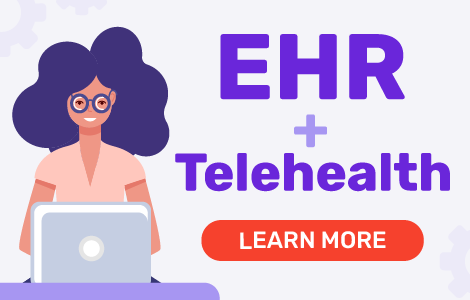Stanford Binet

Stanford Binet IQ Test is a renowned tool in the field of psychology and education. This article aims to shed light on the significance of assessing cognitive abilities in therapeutic settings and explore the history, development, and relevance of this test. Understanding the Stanford Binet IQ Test is crucial, not only for psychologists and educators but also for individuals seeking self-improvement and growth.
Summary
- The Stanford Binet IQ Test is a vital tool for cognitive assessment, widely used in psychological and educational settings. It helps identify cognitive strengths and weaknesses, enabling therapists and educators to create tailored interventions. Download my free Counseling treatment plan
- Cognitive assessments play a crucial role in therapy, aiding in diagnosing learning disabilities, cognitive decline, and developmental disorders. These evaluations support individualized treatment plans and help track progress over time.
- The test has evolved to reflect modern intelligence theories, incorporating multiple intelligences and culturally sensitive content. This ensures more accurate and equitable assessments across diverse populations. An EHR like TheraPlatform can help therapists document findings of tests and manage practice, scheduling and billing.
- Interpreting and integrating IQ results into therapy requires ethical considerations and collaboration, ensuring informed consent, cultural sensitivity, and confidentiality while working with educators and other professionals to optimize client outcomes.
Streamline your practice with One EHR
- Scheduling
- Flexible notes
- Template library
- Billing & payments
- Insurance claims
- Client portal
- Telehealth
- E-fax

Importance of assessing cognitive abilities in therapy
Cognitive abilities play a pivotal role in shaping an individual's life. They influence how we learn, adapt to new environments, and cope with life's challenges. As such, the assessment of cognitive abilities is an integral part of various therapeutic approaches. Whether the goal is to help a child with learning difficulties, support an adult struggling with cognitive decline, or guide a student towards academic success, understanding a person's cognitive strengths and weaknesses is essential.
The Stanford Binet IQ Test offers a comprehensive way to evaluate an individual's cognitive functioning. This evaluation not only aids in the diagnosis of cognitive disorders and learning disabilities but also enables therapists and educators to design tailored interventions.
Additionally, the test provides a benchmark for measuring cognitive progress, making it a valuable tool for tracking therapy outcomes. In essence, cognitive assessment, particularly through the Stanford Binet IQ Test, is an indispensable resource for promoting growth, learning, and mental well-being
The purpose of this content is to provide a thorough exploration of the Stanford-Binet Intelligence Quotient (IQ) Test. By delving into its history, development, and application, we aim to equip our readers with a well-rounded understanding of the test and its relevance in various contexts. This article seeks to inform professionals and empower individuals with knowledge about the Stanford Binet IQ Test and its potential to shape educational and therapeutic outcomes.
What is The Stanford Binet IQ Test
The Stanford Binet IQ Test, initially developed by Alfred Binet and Théodore Simon in France in the early 20th century, marked a groundbreaking shift in the assessment of human intelligence. Designed to identify cognitive strengths and weaknesses in children, the test aimed to help tailor education to individual needs. It was subsequently adapted by Lewis Terman at Stanford University, leading to the name "Stanford-Binet." This evolution expanded its scope to assess intelligence across the lifespan, not just in childhood.
Over the years, the test has undergone significant revisions to adapt to changing societal norms and advances in psychological research. The various editions of the Stanford-Binet Test have sought to provide a more accurate representation of an individual's cognitive abilities, and they continue to influence the field of psychology and education profoundly.
Explanation of the Stanford Binet IQ Test theoretical foundations and updates
The Stanford Binet IQ Test is firmly rooted in the theory of intelligence, which has evolved over time. Originally, it focused on measuring general intelligence, often described as a single, unitary construct. However, contemporary versions of the test have expanded to incorporate the broader concept of multiple intelligences. This shift recognizes that intelligence encompasses a wide range of cognitive abilities, including verbal, mathematical, spatial, and social intelligence.
Furthermore, the test has evolved to incorporate more diverse and culturally sensitive content. This shift is essential for addressing potential biases in earlier versions of the test and ensuring that it accurately measures intelligence across a diverse range of individuals and backgrounds.
Overview of the Stanford Binet IQ Test’s structure and subtests
The Stanford Binet IQ Test comprises a series of subtests that evaluate various cognitive domains. These subtests include tasks related to verbal reasoning, quantitative reasoning, abstract/visual reasoning, and short-term memory and knowledge. Each subtest provides insights into specific cognitive abilities, allowing professionals to pinpoint strengths and areas in need of improvement.
Understanding the structure of the test is crucial for both test administrators and those undergoing evaluation. It enables tailored interventions, informed decisions in education, and the creation of strategies to enhance cognitive functioning. As we delve deeper into this article, we will explore the specific subtests in more detail, illuminating the practical utility of the Stanford Binet IQ Test in various contexts.
Practice Management + EHR + Telehealth
Mange more in less time in your practice with TheraPlatform
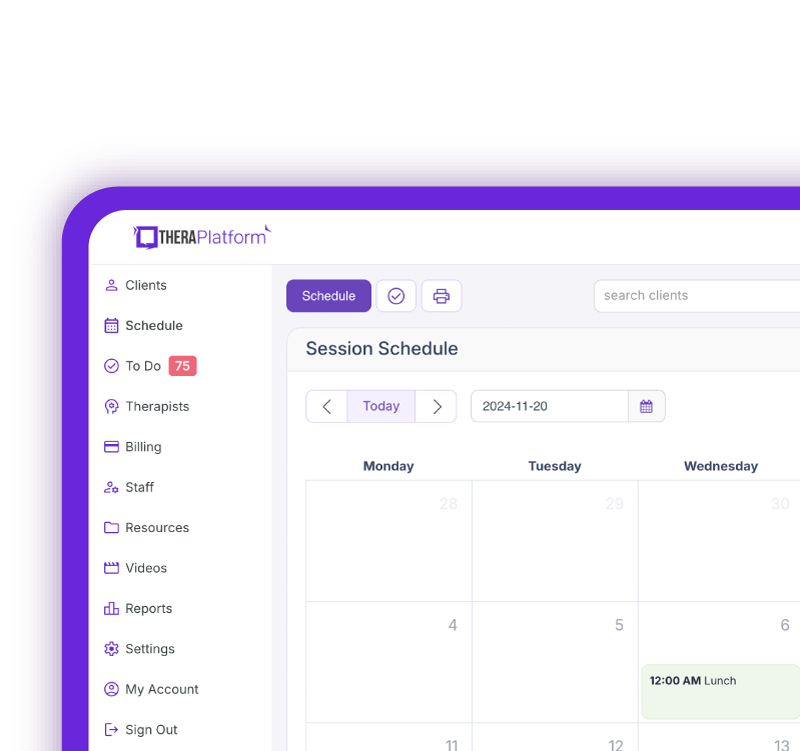
Cognitive assessment and therapeutic context
Cognitive assessment plays a vital role in therapy across a broad spectrum of psychological and educational settings. Its primary function is to provide therapists, psychologists, and educators with a comprehensive understanding of an individual's cognitive abilities.
This information serves as the foundation for therapeutic interventions, enabling professionals to design personalized treatment plans and educational strategies. Cognitive assessment aids in diagnosing cognitive disorders, learning disabilities, and developmental delays, allowing for early intervention and tailored support.
Therapists use cognitive assessment as a diagnostic tool to identify areas of cognitive strengths and weaknesses. This knowledge helps them address specific issues, whether they are related to attention, memory, reasoning, or problem-solving skills.
In therapy, cognitive assessment becomes a roadmap for understanding the cognitive profile of the individual, facilitating the creation of targeted interventions that maximize progress and overall well-being.
Free Resources for Therapists
Click below and help yourself to peer-created resources:
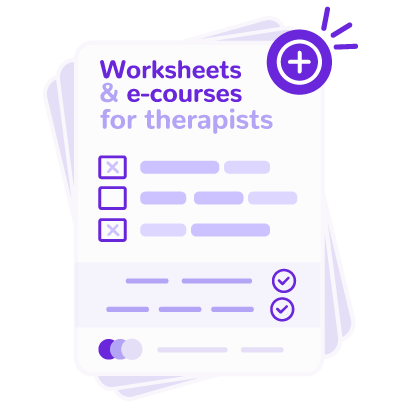
How the Stanford Binet IQ Test complements therapeutic goals
The Stanford Binet IQ Test serves as a valuable instrument in achieving therapeutic goals. It provides an in-depth assessment of an individual's cognitive abilities across various domains, making it particularly useful in therapy. Here are some ways the Stanford Binet IQ Test complements therapeutic objectives.
The test offers a detailed cognitive profile, allowing therapists to design interventions that address specific cognitive challenges. Whether working with children with learning difficulties, adults with cognitive decline, or individuals with developmental disorders, the test helps create highly customized and effective therapy plans.
Therapists often use the Stanford Binet IQ Test as a baseline measurement and periodically re-administer it to track cognitive progress. This objective measurement allows therapists and clients to observe improvements and make necessary adjustments to treatment plans.
In educational settings, the Stanford Binet IQ Test can uncover learning disabilities that may otherwise go undiagnosed. This early identification enables educators to provide appropriate accommodations and support, ultimately fostering academic success.
For adolescents and adults, the test can provide insights into career choices and personal development. By understanding cognitive strengths and weaknesses, individuals can make more informed decisions about their life paths.
Ensuring ethical and sensitive administration of cognitive assessments
The ethical administration of cognitive assessments, including the Stanford Binet IQ Test, is of utmost importance in therapeutic settings.
Therapists and educators must consider several key factors to ensure the ethical and sensitive use of such assessments:
- Informed consent: Individuals undergoing cognitive assessment should provide informed consent, understanding the purpose and implications of the evaluation.
- Cultural sensitivity: Assessments should be culturally sensitive and consider the diverse backgrounds and experiences of the individuals being evaluated to avoid potential biases.
- Confidentiality: The results of cognitive assessments must be kept confidential, and access to this information should be limited to those directly involved in the therapeutic process.
- Professional training: Administrators should be trained professionals with a thorough understanding of the test and its administration to ensure accurate results.
- Feedback and support: After the assessment, individuals should receive feedback in a supportive and constructive manner, emphasizing the potential for growth and development.
Preparing and administering the Stanford Binet IQ Test
Preparing and administering the Stanford Binet IQ Test requires careful planning and execution to ensure accurate results and a positive experience for clients. Here are step-by-step instructions for this process:
Stanford Binet IQ Test steps for preparation
- Obtain informed consent: Explain the purpose of the assessment and the nature of the Stanford Binet IQ Test to the client or their legal guardian. Ensure the client or guardian provides informed consent for the evaluation.
- Gather background information: Collect relevant client history, including any prior assessments, medical conditions, medications, and educational history.
- Explain the assessment process: Briefly describe the test's format, duration, and what the client can expect during the assessment. Address any questions or concerns the client may have.
- Establish a comfortable environment: Create a quiet, distraction-free testing environment to minimize anxiety and optimize concentration.
Stanford Binet IQ Test steps for administration
- Standardized administration: Administer the test according to standardized protocols. Ensure you are familiar with the specific version of the Stanford-Binet being used, as the test format may vary.
- Test introduction: Begin the assessment by providing a clear and concise introduction to the client. Explain that there are a series of tasks to complete, and their best effort is important.
- Instructions for each subtest: Before starting each subtest, provide clear and concise instructions. Ensure the client understands the task and can ask any questions if needed.
- Timed Sections: Monitor the timing of each subtest, as some sections are timed. Notify the client when they have a specific amount of time remaining.
- Maintain neutrality: Maintain a neutral demeanor and avoid providing any cues or hints during the assessment. Your role is to facilitate the test, not to influence the client's responses.
- Offer breaks: If the test is particularly lengthy, offer short breaks to allow the client to rest and recharge.
- Adaptive testing: In some cases, the Stanford Binet IQ Test may include adaptive components, where the difficulty level of the questions changes based on the client's responses. Ensure you understand how this works if it's relevant to the version of the test being administered.
Free Resources for Therapists
Click below and help yourself to peer-created resources:

Stanford Binet IQ test interpretation
- Scoring and interpretation: Score the test based on the established criteria for the specific version of the Stanford-Binet. Interpret the results with sensitivity, considering the individual's cognitive strengths and weaknesses.
- Feedback session: Schedule a feedback session to discuss the results with the client or their guardian. Explain the findings, their implications, and how they can be used to inform future decisions or interventions.
- Confidentiality and documentation: Ensure that the test results and any related documentation are kept confidential and stored securely.
- Follow-up and recommendations: Provide recommendations based on the assessment results, whether they pertain to educational support, therapy, or other interventions.
- Ethical considerations: Throughout the process, adhere to ethical guidelines, ensuring client rights, confidentiality, and cultural sensitivity are respected. By following these step-by-step instructions, you can effectively prepare and administer the Stanford Binet IQ Test, creating a supportive and accurate assessment experience for your clients.
Interpreting Stanford Binet IQ Test results
IQ scores, a cornerstone of the Stanford Binet IQ Test, provide valuable insights into an individual's cognitive abilities.
These scores are determined through a standardized assessment process, with a mean score set at 100 and a standard deviation of 15. Understanding IQ scores is essential:
- Understand the importance of mean and deviation: An IQ score of 100 represents the average intelligence level, and most individuals fall within one standard deviation of this mean.
- Significance: Higher scores indicate above-average cognitive abilities, while lower scores may suggest cognitive challenges.
- Variability: IQ scores are not static and can change over time, reflecting developmental or environmental factors. IQ scores are given in a confidence interval, reflecting a range of scores not a single number.
Understanding the cognitive domains assessed by the Stanford Binet IQ Test
The Stanford Binet IQ Test assesses five domains.
Stanford Binet Cognitive Domains | Description |
|---|---|
Verbal reasoning | Evaluates language-based cognitive abilities, including vocabulary and comprehension. |
Quantitative reasoning | Measures mathematical and problem-solving skills. |
Abstract/Visual reasoning | Assesses the ability to think in abstract and visual terms. |
Short-term memory | Tests immediate memory retention and recall. |
Knowledge | Tests accumulated stock of general information committed to long-term memory. |
Each subtest provides insights into specific cognitive strengths and weaknesses, helping to identify areas in need of attention and improvement.
Providing context for clients to interpret their scores
Interpreting IQ scores requires a nuanced approach. When discussing results with clients, consider the following:
- Individual variation: Explain that a single IQ score does not encompass the complexity of a person's intelligence. It represents a snapshot of cognitive abilities.
- Strengths and weaknesses: Highlight specific areas of strength and areas that may require additional support.
- Developmental factors: Emphasize that IQ scores can evolve over time, particularly in children and adolescents.
Integrating IQ test results into therapeutic practice
Engaging in a collaborative discussion with clients about their IQ test results is crucial.
This process involves:
- Active listening: Create an open and non-judgmental space for clients to express their thoughts and feelings about their scores.
- Clarification: Address any questions or misconceptions clients may have about their IQ scores.
- Client Empowerment: Encourage clients to be active participants in understanding their results and how they relate to their goals and aspirations.
Using IQ results to tailor treatment plans and strategies
Integrating IQ results into therapy can be a powerful tool for tailoring treatment plans:
- Individualized interventions: Adapt therapy techniques to leverage cognitive strengths and address weaknesses.
- Educational support: Collaborate with educators to implement strategies that align with a client's cognitive profile.
- Goal setting: Help clients establish realistic goals and expectations, considering their cognitive abilities.
Addressing potential emotional reactions or concerns related to IQ scores
Clients may have emotional reactions to their IQ scores. Addressing these reactions is an essential part of the therapeutic process:
- Emotional support: Offer emotional support to clients who may experience anxiety, frustration, or self-esteem issues related to their scores.
- Empowerment: Assist clients in reframing their understanding of IQ as just one aspect of their overall abilities.
- Positive reinforcement: Focus on fostering self-acceptance and self-worth, emphasizing that IQ scores do not define an individual's entire identity.
Collaborating with other professionals
Collaboration with other professionals is often essential to provide comprehensive care.
Therapists administering IQ tests may be asked to discuss the findings with others in order to help form a multisystemic approach to the individual’s success.
- Educators: Share IQ test results with educators to develop tailored educational plans.
- Speech and language therapists: Collaborate to address language-related cognitive challenges.
- Occupational therapists: Coordinate efforts to improve cognitive and motor skills.
Interdisciplinary collaboration ensures that clients receive well-rounded support that considers their cognitive abilities in various contexts.
To further your understanding of the Stanford Binet IQ Test and its applications in therapy, the essential reading is:
- Essentials of Stanford-Binet Intelligence Scales (SB5) Assessment: A comprehensive book that provides insights into the history, development, and application of the Stanford Binet IQ Test.
- Psychological journals: Regularly read peer-reviewed journals in psychology and education to stay up-to-date with the latest research on IQ testing, cognitive assessment, and therapeutic applications. The American Psychological Association has a division specifically for assessment related journals which is the ideal place to start.
- Websites: Explore reputable websites and resources from organizations such as the American Psychological Association (APA) for articles, guidelines, and research related to IQ testing. Access to relevant literature can also be found through academic databases such as PubMed or Google Scholar.
Practice Management + EHR + Telehealth
Mange more in less time in your practice with TheraPlatform

Training and professional development
To enhance your skills in administering and interpreting the Stanford Binet IQ Test, as well as integrating it into therapeutic practice, consider the following options for training and professional development:
- Workshops and seminars: Look for workshops and seminars that focus on cognitive assessment, IQ testing, and therapeutic applications. These often provide hands-on experience and expert guidance.
- Online courses: Many accredited institutions and organizations offer online courses that cover the Stanford Binet IQ Test and its use in therapy. These courses are flexible and can be taken at your own pace.
- Certification programs: Explore certification programs that specialize in psychological assessment and cognitive testing. These programs can help you become a recognized expert in the field.
- Supervision: Seek out experienced professionals who can provide supervision and guidance in using the Stanford Binet IQ Test in therapeutic contexts. This mentorship can be invaluable in your professional development.
The Stanford Binet IQ Test is a powerful tool for assessing cognitive abilities in therapeutic settings. When administered with care, interpreted thoughtfully, and integrated into therapy, it becomes a valuable resource for enhancing the well-being and cognitive development of individuals. Therapists and professionals in related fields can further their knowledge and skills through readings, research, and training programs, ensuring that they provide the best possible support to their clients.
Additional tools and outcome measures to help with data collection and progress monitoring
Therapists can also take advantage of EHRs (such as TheraPlatform) that offer integrations with Wiley treatment planners to ensure consistent data collection on progress from session to session. The best part about partnering with a modern EHR is the time you save on formulating the actual notes and scoring.
What is Wiley Treatment Planner?
Wiley Treatment Planner is a widely used clinical resource designed to help mental health professionals and other therapists efficiently create treatment plans for their clients. In addition to treatment plans, the company also provides prewritten therapy notes for some diagnostic codes. It is part of the "PracticePlanners" series published by Wiley.
Features of Wiley Treatment Planner includes:
- Prewritten, evidence-based treatment goals, objectives, and interventions
- Treatment planners tailored to specific populations and problems, including adults, children, adolescents, couples, families, addictions, and more
- Alignment with the diagnostic criteria from the DSM-5 and ICD-10
- Prewritten therapy notes
Is there an online version of Wiley Treatment Planner and how can I get the Wiley Treatment Planner?
Wiley Treatment Planner company partnered with a select number of EHRs for mental health providers to make treatment planners available online. TheraPlatform’s EHR offers the Wiley Treatment Planner as an add-on for both assessment and treatment plans and therapy notes, such as notes. You can edit prewritten notes and add your own with any therapy template on TheraPlatform.
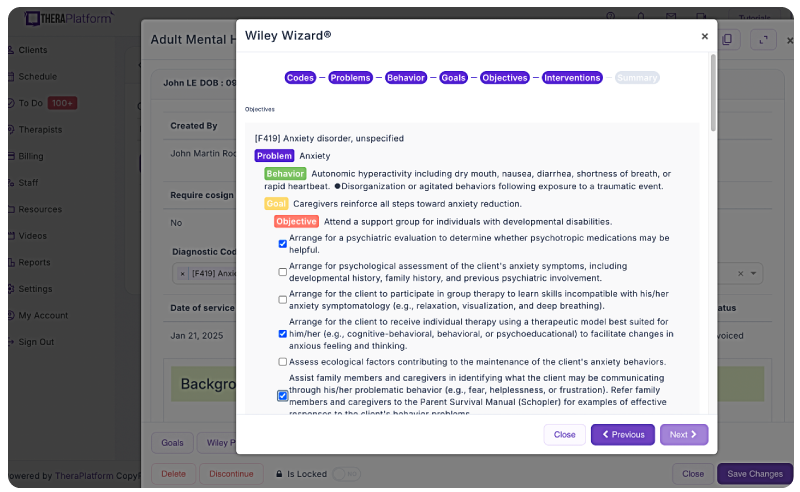
Save time with automatically scored outcome measures
Mental health therapists can use outcome measures to document progress, track a variety of key clinical indicators, helping providers make data-driven decisions, improve communication with clients, and improve client outcomes. Additionally, outcome measures help therapists adhere to compliance requirements and provide documentation needed to support reimbursement.
Watch this video to learn about how to autoscore outcome measures
→ Sign up for a Free Frial
While outcome measures clearly provide benefits to both clients and therapists, they can be time-consuming, especially if clinicians score responses manually.
However, many aspects of outcome measures can be automated through an EHR like TheraPlatform:
- Sending measurements: Common assessments such as the PHQ-9 or GAD-7 can be automatically sent to clients and stored in their records or they can be scheduled on regular intervals.
- Auto scoring: TheraPlatfrom automatically scores and sums totals for common outcome measures.
- Report building and analysis: Results can be analyzed over time, with visual charts showing progress on rates of severity and session-to-session progress.
By regularly using these measures, therapists can gain valuable insights, tailor interventions, and improve client outcomes while demonstrating the effectiveness of their care without manual entry.
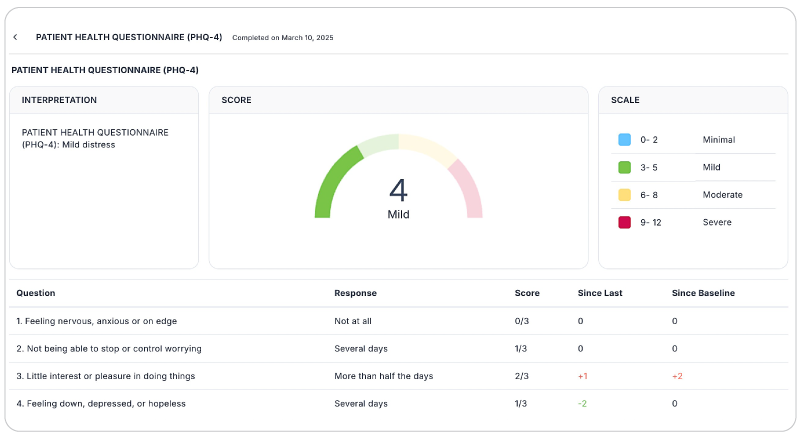
Practice Management + EHR + Telehealth
Mange more in less time in your practice with TheraPlatform

Improving mental health assessment notes with EHR software
EHR software and practice management tools, such as TheraPlatform, offer numerous advantages in creating accurate, efficient, and organized notes.
Top 7 benefits of using EHR for notes management
Manually writing and storing notes can be cumbersome for many therapists. That process can be further exacerbated by simple document requests that include locating, faxing or scanning documents.
Features like customizable templates, secure storage, easy sharing, duplication, electronic signatures, and efax integration, streamline the note process, optimizing therapy documentation and workflows.
- Consistent notes with template library: EHRs equipped with a library of note templates enable therapists to create standardized and concise notes quickly. This feature ensures consistency across notes, making it easier to review client progress. Additionally, EHRs provide centralized storage and management of notes, enhancing accessibility and organization.
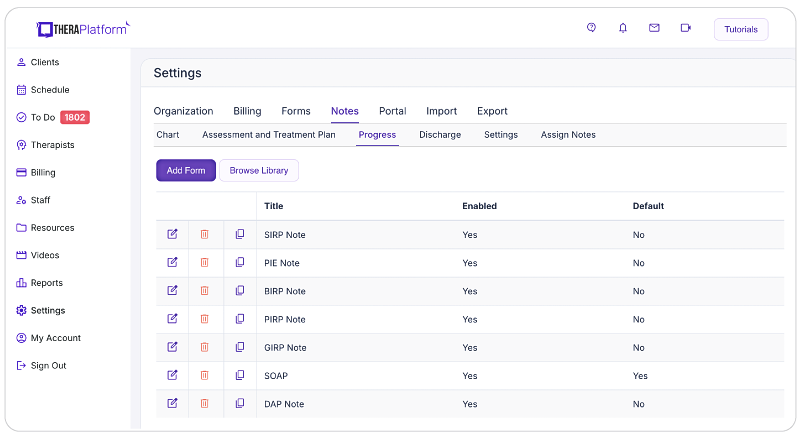
- Customizable notes: Not all EHRs offer customizable note templates tailored to therapists' unique needs. However, with a robust and user-friendly note template builder, therapists can customize note templates to align with their preferred note-taking style. This flexibility allows for efficient data entry, whether therapists prefer separating sections or using a single note field or checkboxes for mental status or techniques.

- HIPAA-compliant note storage: EHRs prioritize data security by implementing bank-level encryption to safeguard notes and other client information. TheraPlatform, for instance, ensures HIPAA compliance by offering signed, legally-binding Business Associate Agreements to protect Protected Health Information (PHI) between compliant entities.
- Seamless note sharing with clients: Clients may request access to their notes to better understand their treatment or keep them for record-keeping purposes. Using an EHR, therapists can securely share notes with clients, saving time compared to paper-based practices. TheraPlatform, a HIPAA-compliant EHR for therapists, facilitates secure note sharing with clients.
- Duplicate notes: In cases where the data remains the same across multiple sessions, duplicating notes can save time. This feature is particularly useful when clients exhibit repetitive behaviors or show minimal progress, allowing therapists to refer back to previous notes for accurate documentation.
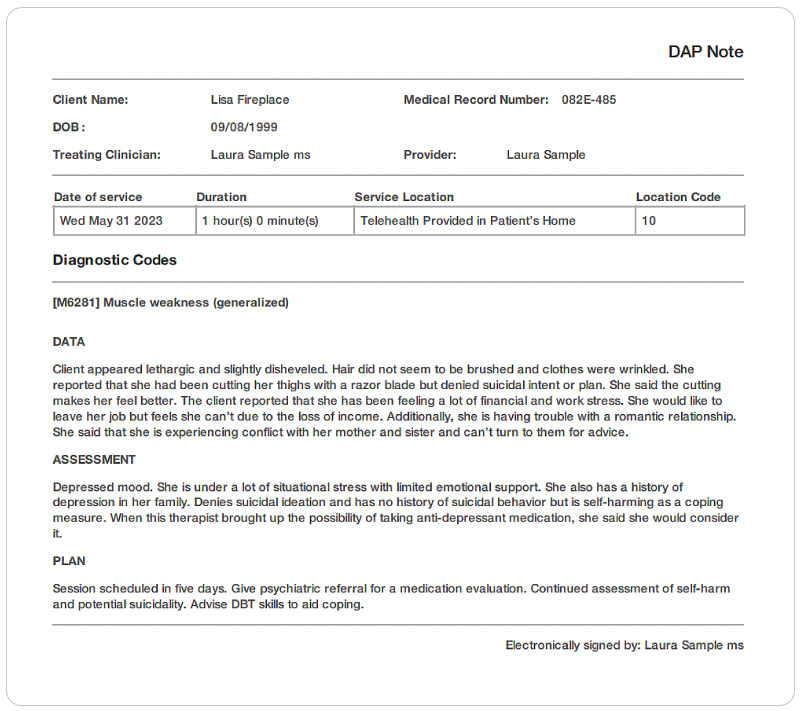
- Client signatures made easy: EHRs streamline the process of requesting client signatures. TheraPlatform's Pro and Pro Plus plans enable therapists to request electronic signatures directly on notes. Clients can conveniently download and print the documents requiring their signatures.
- Easier faxing: TheraPlatform offers efax integration as an add-on feature, eliminating the need for toggling between multiple services. This integrated solution allows therapists to send and receive documents, including notes, via fax directly from TheraPlatform. Additionally, received faxes can be easily filed under the respective client's charts.
By leveraging the capabilities of EHR software like TheraPlatform, therapists can enhance the accuracy, efficiency, and accessibility of their notes, allowing them more time to enhance client care.
Streamline your practice with One EHR
- Scheduling
- Flexible notes
- Template library
- Billing & payments
- Insurance claims
- Client portal
- Telehealth
- E-fax

Resources
Theraplatform is an all-in-one EHR, practice management and teletherapy solution that allows you to focus more on patient care. With a 30-day free trial, you have the opportunity to experience Theraplatform for yourself with no credit card required. Cancel anytime. They also support different industries including mental and behavioral health therapists in group practices and solo practices.
More resources
- Therapy resources and worksheets
- Therapy private practice courses
- Ultimate teletherapy ebook
- The Ultimate Insurance Billing Guide for Therapists
- The Ultimate Guide to Starting a Private Therapy Practice



